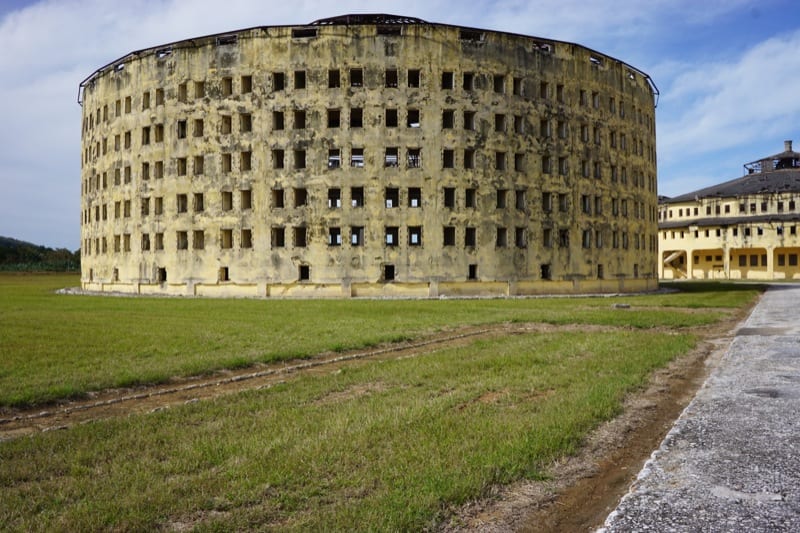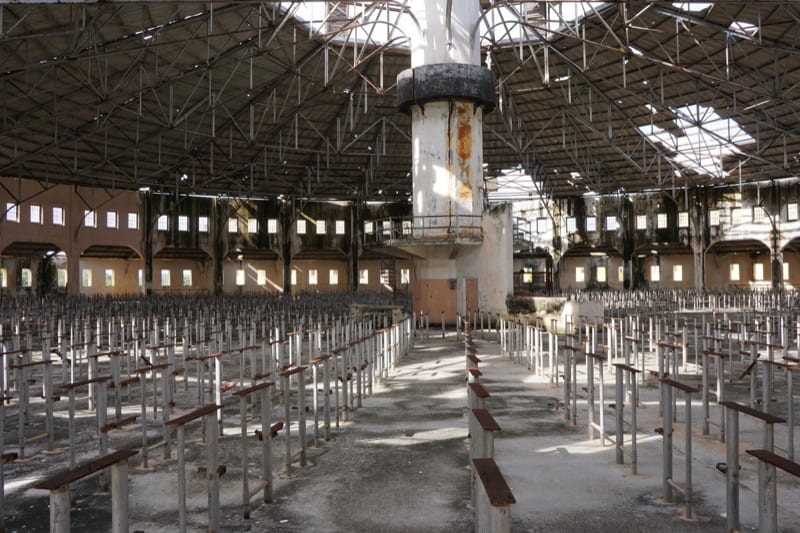Cuba’s Model Prison and its History
by Luis Rondon Paz Photos by Doug Townsend

HAVANA TIMES — At one time, the “Model Prison” located on Cuba’s Isle of Pines (currently Isle of Youth) was the largest prison the island had seen in a century. Its circular design was based on that of a prison located in Illinois, USA.
In its glory days, it housed as many as 8,000 inmates, marking a record in the history of Cuba’s penitentiary system. Its cells were monitored 24 hours a day, from a control tower located at the center of each building. These were accessed via an underground tunnel that led to the outside of the prison.
Its mess hall was located in the largest wing of the correctional center and had capacity for 5,000 inmates. According to those versed in the history of the facility, if a single inmate made a sound, all were denied the right to eat that day.

For more than 40 years, it was scorned by the locals, who saw the violations and forced labor that the inmates were subjected in its premises. It was a veritable hell, a concentration camp, they said.
Intellectual Pablo de la Torriente Brau wrote critical passages of the Model Prison. In his time, it was an unbearable ordeal, he wrote. He never imagined the worst would come with the Second World War.
Many people residing on the island with ties to Germans or Japanese were arbitrarily detained and, as they didn’t have a right to a fair trial at the time, they had no choice but to simply pray in the two buildings reserved for war prisoners.
Later, important figures from the Cuban revolution were imprisoned here. Fidel and Raul Castro served sentences in this place, but not for long, thanks to the Fidel Castro’s contacts and knowledge of rights and legislation. Writings like his History Will Absolve Me played a key role in his release and the release of his comrades. Thus, they did not endure the privations of that colossal prison for long.
After the revolution of Jan. 1, 1959, the new government began programs to humanize the treatment of prisoners geared toward their reincorporation in society. This was the beginning of the end of El Modelo as a prison.

In 1967 the prison bars were removed and part of the facility was converted into a farm studies technical school. Six years later a museum was opened in the Hospital building where the assailants of the Moncada Garrison (1953) spent around two years before their release.
But the facility has fallen into decay, especially after being hit hard by hurricane Gustav in August of 2008.
“It’s a shame these wings are in such bad condition,” one of the caretakers told Havana Times with regret in her voice. When asked if any project aimed at restoring the facilities was underway, she replied she didn’t know, concluding that, for the sake of Cuba’s historical memory, places like these should be preserved because of their architectural, political and historical value – and particularly to remind people that places like these should never again exist.
Click on the thumbnails below to view all the photos in this gallery. On your PC or laptop, you can use the directional arrows on the keyboard to move within the gallery. On cell phones use the keys on the screen.

























It would be interesting to read about the conditions in Cuba’s numerous prisons currently. Having the fourth highest rate of incarceration in the world, there must be considerable built up knowledge of prisoner treatment. For example, is torture banned or is it practiced?
I remember being in Jo’burg in South Africa and a couple with ‘progressive’ views from England went off to see the jail where Nelson Mandela was imprisoned. Upon return they were expressing their disgust with the place and the conditions under which he was kept. Having actually visited some UK jails, I inquired how they compared? The couple didn’t know, because they had never been to a jail previously. Jails are not nice places – but current conditions are the ones that ought to be of most concern to us.
Fidel and Raul Castro have lived incredibly charmed lives, although many who took part in the Moncado Barracks failure were executed, the Castros following trial, were jailed. Later Batista declared an amnesty and they were released. Raul went to Mexico before Fidel, who had four children in Cuba by four different women in 1956. When Fidel arrived in Mexico, Raul introduced him to Ernesto Guevara and to Nikolai Leonov of the KGB whom he had originally met when visiting the USSR in 1953 following Stalin’s death and prior to the Moncado Barracks raid. Leonov appeared again as the KGB man in Havana following the revolution and recently completed a biography of Raul Castro, he is now 87. Following the Granma landing of 83 people there was a battle in a sugar field and only 13 survived, but included Fidel, Raul and Ernesto Guevara de Serna Lynch. Just how successively lucky can two brothers be when so many of their supporters died?
Been there… the place gave me the shivers. If you go the the Isla, you should not miss it!
More tips: http://www.bestcubatravelguide.com
I’ve visited here a couple of times. It’s spooky and depressing. If it wasn’t so difficult to get to it would make a great tourist attraction.